Hanno City Guide: Exploring the Hidden Gem of Saitama
- Published on : 15/06/2024
- by : Japan Experience
- Youtube
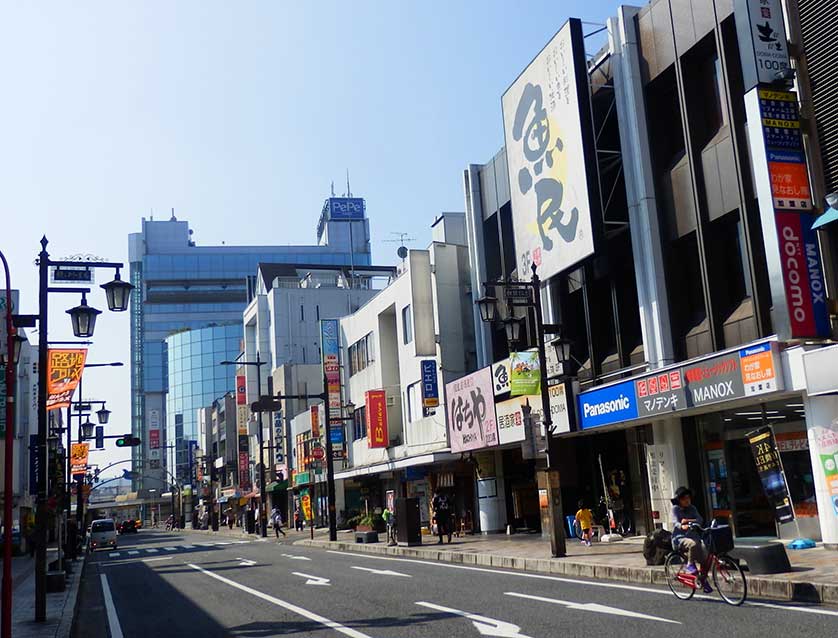
Downtown Hanno city with Hanno Station in the background, Saitama Prefecture
Nestled in the heart of Saitama Prefecture, Hanno City offers a captivating blend of natural beauty and urban charm. This tranquil Tokyo suburb, home to about 80,000 residents, is a gateway to lush mountains and serene rivers. Known for its picturesque barbecue spots along the Iruma River, Hanno beckons visitors with its rich history, cultural landmarks, and outdoor adventures. From ancient temples to modern anime tributes, Hanno presents a unique tapestry of experiences that make it an ideal day trip or weekend getaway from the bustling metropolis.
Discovering Hanno: A charming Tokyo suburb with mountain views
Hanno's allure lies in its perfect balance between urban convenience and natural splendor. Just an hour from Tokyo's Ikebukuro Station, this city offers a refreshing escape from the capital's frenetic pace. The Iruma River, with its iconic red pedestrian bridge, serves as the city's centerpiece, inviting visitors to unwind along its banks. Hanno's landscape is punctuated by verdant mountains, creating a picturesque backdrop for the city's blend of traditional and modern architecture.
One of Hanno's most charming features is its old town area, centered around Odori Street. This traditional shopping street, though quieter now than in its heyday, still retains pockets of historical charm. The Misegurakinujin Building, a former silk merchant's shop built in 1904, stands as a testament to the city's mercantile past. Now serving as an exhibition space, it offers visitors a glimpse into Meiji era architecture, complete with a historic porcelain toilet that's part of its permanent display.
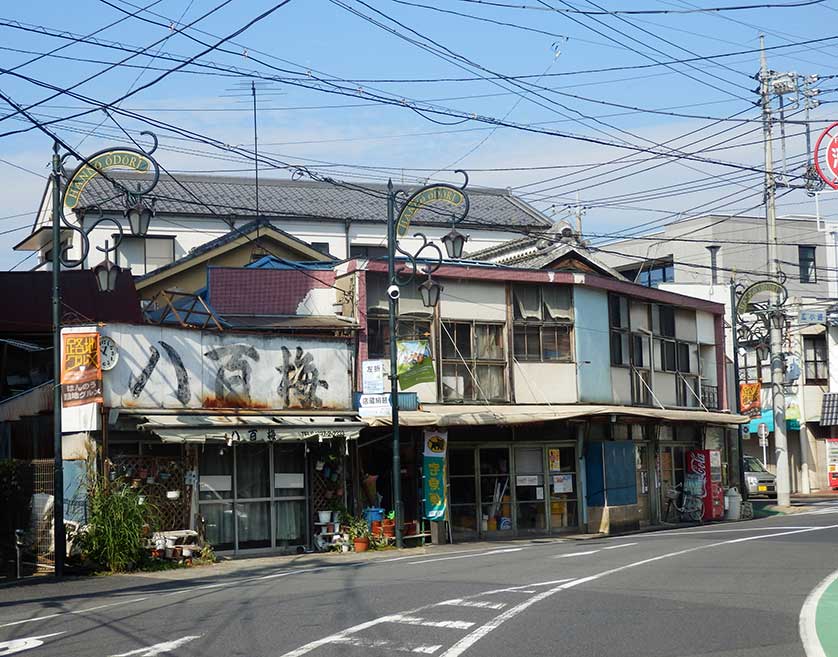
Vintage buildings on Odori Street, Hanno, Saitama Prefecture
Iruma River Valley: The ultimate barbecue destination near Tokyo
Barbecue in the Iruma River Valley is Hanno's claim to fame, drawing crowds from Tokyo and beyond, especially during the warmer months. The Hanno-gawara area, just a 15-minute walk from Seibu Hanno Station, is the epicenter of this outdoor culinary tradition. Here, the river narrows but its gravel banks widen, creating an ideal setting for barbecues.
On sunny weekends, the riverbank transforms into a lively gathering spot for families and friends. While parking is limited, the area is easily accessible by train. Visitors don't need to worry about bringing equipment; numerous rental outlets provide grills, charcoal, and even sell a variety of meats and other barbecue essentials. For those seeking a more secluded experience, carrying supplies a bit further along the riverbank can lead to more private spots, allowing for a peaceful barbecue amidst the natural beauty of the wooded river valley.
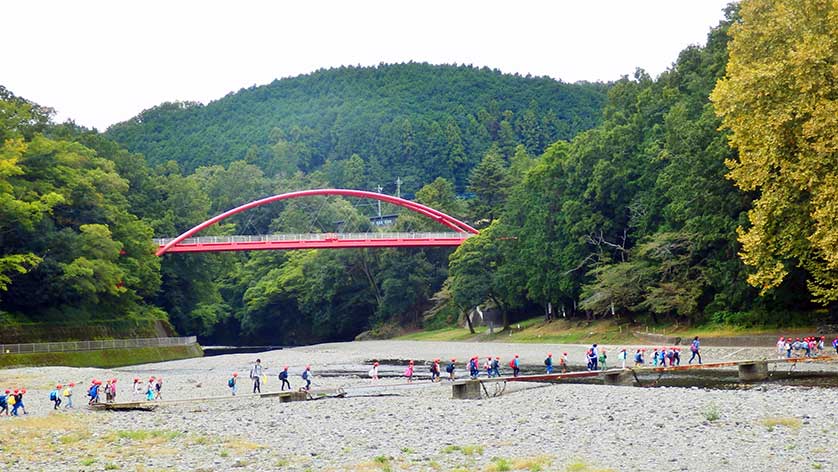
Children on a school trip cross the Iruma River at the Hanno-gawara river bank
Hanno's historical heart: A walk through time on Odori Street
Odori Street, Hanno's traditional shopping avenue, offers a journey through the city's past. While modernization has altered much of its landscape, pockets of historical architecture remain, offering glimpses into Hanno's rich heritage. The street truly comes alive during the Hanno Festival, held annually on the first weekend of November. This vibrant celebration features elaborate mikoshi (portable shrines) paraded through the city center, showcasing Hanno's cultural traditions.
The History of Hanno is deeply rooted in its origins as a lumberjack village. During the Edo Period (1603-1868), Hanno played a crucial role in supplying timber to the rapidly growing Edo (present-day Tokyo). Logs were rafted down the Iruma River, a journey that took about 10 days. This legacy of forestry and river trade has shaped Hanno's development and continues to influence its character today.
Sacred spaces: Exploring Hanno's ancient temples and spiritual sites
Hanno's spiritual landscape is dotted with ancient temples, each with its own unique story. Kannon-ji Temple, dating back to 810 AD, stands as a serene sanctuary that blends traditional architecture with modern touches. The temple's grounds feature a striking white elephant statue, while its ema prayer tablets depict contemporary manga characters, illustrating the temple's embrace of both tradition and pop culture.
Nonin-ji Temple, with roots tracing back to the early 16th century, offers visitors a tranquil retreat known for its stunning autumn foliage. The temple, reconstructed after being destroyed in the 1868 Battle of Hanno, belongs to the Soto Sect of Zen Buddhism. Its expansive grounds, including a large cemetery on the slopes of Mount Tenran, provide panoramic views of Hanno City and serve as a peaceful spot for contemplation.
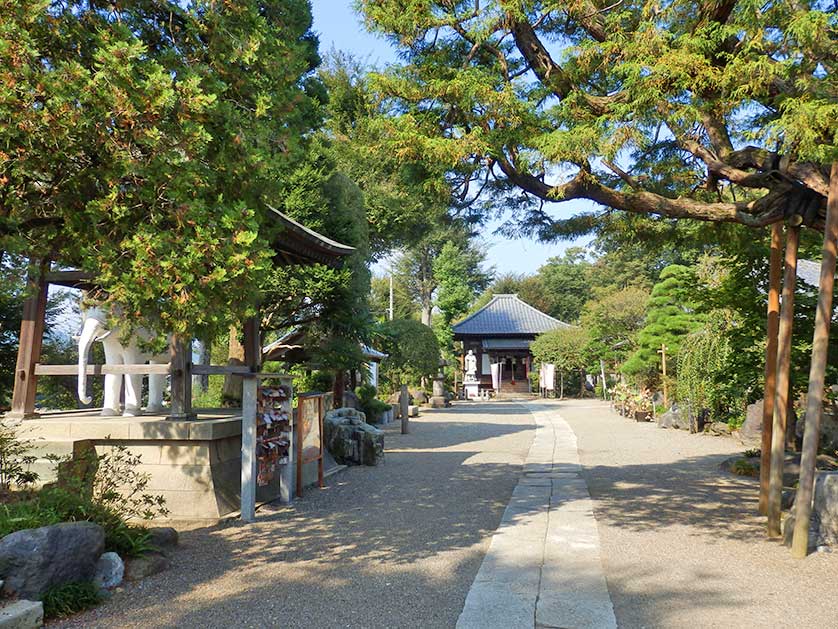
Kannon-ji Temple with the white elephant statue on the left. Hanno, Saitama Prefecture

Ema plaques featuring manga characters at Kannon-ji Temple
Nature and adventure: Hiking Mount Tenran and the Naguri Valley
Mount Tenran and the 16 Rakan offer an accessible hiking experience right in the heart of Hanno. Standing at 195 meters, Mount Tenran may not be imposing, but it provides rewarding views and an intriguing cultural experience. The trail features 16 ancient stone statues of Rakan, early followers of Buddha who achieved enlightenment. These Edo-period statues, set against a steep rock wall, are beautifully illuminated by sunlight filtering through the forest canopy, creating a mystical atmosphere.
For those seeking a more immersive nature experience, the Naguri Valley, incorporated into Hanno in 2005, offers a deeper venture into the Chichibu Mountains. A short bus ride from Hanno Station brings visitors to this scenic area, home to the impressive Torii Kannon statues of Mount Hakuun and the picturesque Naguri Lake (aka the Arima Reservoir). The valley is ideal for hiking, canoeing, and enjoying the changing colors of the seasons of the year.
Pop culture and tradition: Unique attractions in Hanno
Hanno's cultural landscape is a fascinating mix of the traditional and the contemporary. The city pays homage to popular culture with the Astro Boy Statue, a bronze tribute to the iconic manga and anime character created by Osamu Tezuka. Unveiled in 1983, this statue was the first of its kind in Japan and represents Hanno's connection to modern Japanese pop culture.
The city's commitment to blending nature with contemporary attractions is exemplified by the Moomin Valley Park, which opened in 2019. This theme park, inspired by the Finnish Moomin characters, seamlessly integrates fantastical elements into Hanno's natural setting, offering a unique experience for visitors of all ages. Additionally, the Akebono Children's Forest Park, established in 1997, provides another whimsical escape with its Northern European-inspired fairy-tale architecture, making it a delightful destination for families.
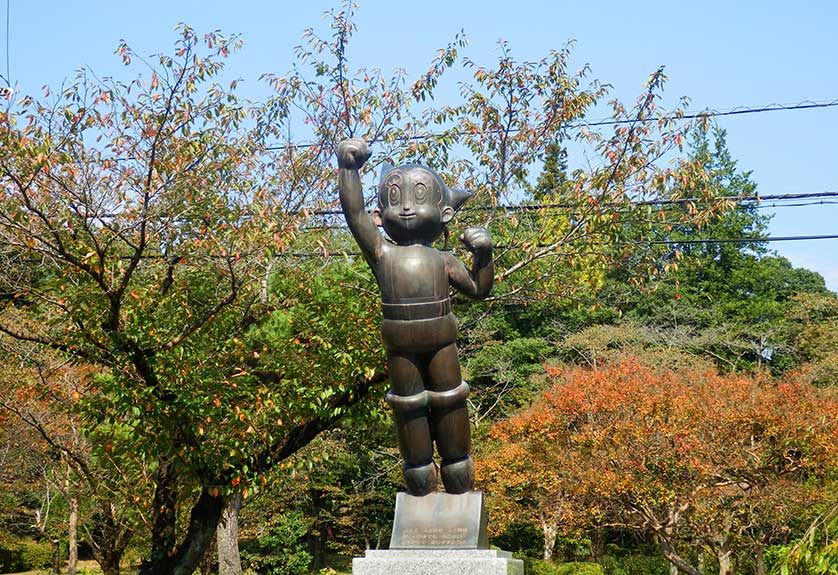
Astro Boy statue, Hanno, Saitama Prefecture
Practical information: Access, accommodation, and seasonal highlights
Hanno Access is straightforward, with direct train connections from Tokyo. The Seibu Ikebukuro Line offers both regular and limited express services from Ikebukuro Station to Hanno, making it an easy day trip or weekend getaway. For those coming from other directions, the JR Hachiko Line also serves Higashi-Hanno Station, connecting the city to areas like Hachioji and Takasaki in Gunma Prefecture.
For Hanno Accommodation, options are primarily concentrated near Hanno Station. The 3-star Hotel Heritage Hanno and Marroad Inn Hanno cater to business travelers and tourists alike. For those seeking a more unique stay, the surrounding areas offer ryokan (traditional inns) and hot spring bath facilities, providing a more immersive Japanese experience.
Hanno's appeal changes with the seasons of the year, offering year-round attractions. Spring brings cherry blossoms to parks and riverbanks, while summer is ideal for river activities and barbecues. Autumn paints the mountains in vibrant autumn colors, perfect for hiking and photography. Winter, though cooler, offers clear views of Mount Fuji from Mount Tenran on crisp days.
For more detailed information and updates on events and attractions, visitors can refer to the official Hanno tourism website at hanno-tourism.com (available in Japanese). While language might be a barrier for some international visitors, the city's natural beauty and warm hospitality transcend linguistic boundaries, making Hanno a rewarding destination for those seeking to explore beyond Tokyo's urban sprawl.

















